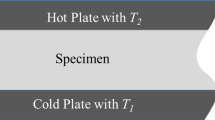Abstract
It is only possible to obtain analytical results that are suitable for their intended purpose if the equipment used is capable of producing measurements of the required quality. To ensure that this requirement is met, analysts should define the performance criteria required from the instruments, ensure that only suitable instruments are selected for analytical measurements, and confirm that these instruments continue to meet these criteria for their entire operational life. This process should be conducted on a formal, documented basis, known as equipment qualification. In addition to describing the key elements of equipment qualification for all analytical instruments, this paper gives specific guidance on its application to conductivity systems that has never previously appeared in the literature. The benefits of performing equipment qualification are highlighted and guidance is given on the selection of control standards and why the equipment vendor performing stages of equipment qualification can be of benefit to the user. The relationship between equipment qualification and method validation is discussed, including how these activities play a major role in determining the quality control measures that should be applied to routine analysis.

Similar content being viewed by others
References
Huber L (1999) Validation and qualification in analytical laboratories. CRC Press LLC, Boca Raton, Florida
Bedson P, Sargent M (1996) Accred Qual Assur 1:265–274
Barron JJ, Ashton C (2005) The effect of temperature on conductivity measurement. TSP-07, Issue 3, available at www.reagecon.com/supportarticles.shtml
Barron JJ, Ashton C (2005) The selection and use of instruments for accurate conductivity measurement. TSP-04 Issue 1, available at www.reagecon.com/supportarticles.shtml
ISO 9001 (2000) Quality management systems – requirements. ISO. Geneva, Switzerland
Barron JJ, Ashton C (2004) The selection, use, care and maintenance of sensors for accurate conductivity measurement. TSP-08, Issue 1, available at www.reagecon.com/supportarticles.shtml
IS0/IEC 17025 (2005) General requirements for the competence of testing and calibration laboratories. ISO. Geneva, Switzerland
Barron JJ, Ashton C (2005) The application of good laboratory practice in the selection and use of accurate, traceable conductivity standards. TSP-10, Issue 2, available at www.reagecon.com/supportarticles.shtml
Gingerella M, Jacanin JA (2000) Cal Lab – Int J Metrol, July–August 2000:29–36
Barron JJ, Ashton C (2005) Cal Lab – Int J Metrol 12.1:24–29.
Bedson P, Rudd D (1999) Accred Qual Assur 4:50–62
Eurachem Guide (1998) The fitness for purpose of analytical methods: a laboratory guide to method validation and related topics
Acknowledgements
The authors wish to extend their gratitude to all of their colleagues who assisted with the production of this article – particularly Ms. V. Byrne for her assistance in compiling this article and Mr. L. Geary and Ms. R. Cooney for proofing this article.
Author information
Authors and Affiliations
Corresponding author
Rights and permissions
About this article
Cite this article
Barron, J.J., Ashton, C. Equipment qualification and its application to conductivity measuring systems. Accred Qual Assur 11, 554–561 (2006). https://doi.org/10.1007/s00769-006-0178-9
Received:
Accepted:
Published:
Issue Date:
DOI: https://doi.org/10.1007/s00769-006-0178-9




